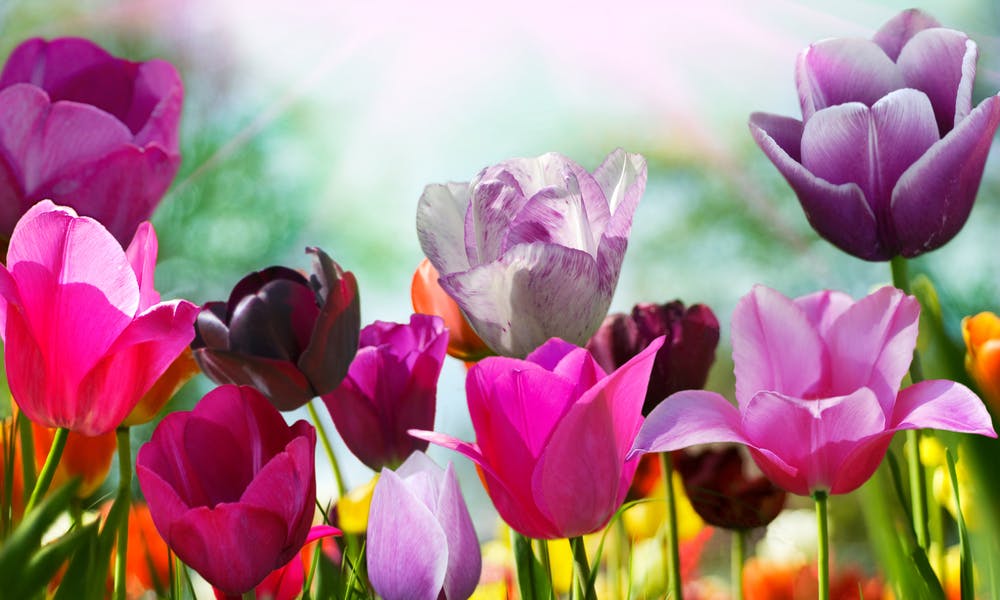MENU
Spring Flowers

After a cold, white winter, there is nothing quite like the sweet relief of warm air and vibrant colors. The sight of plants leaves poke up through the earth, and flower buds forming brings on the tingling anticipation of summer. While the sun and surf are still a few months away, some spring gardens are ready to go. So how can you get the most out of the spring? By planting early flowering plants, of course. Peppering your yard and garden with spring flowers is a great way to extend the use of your landscape. Just remember, too much of a good thing is harmful. So, don’t plant only spring flowers, plant for all seasons.
While the plant itself can likely grow all season, the flowers won’t. The flowers are present for only a few weeks. Choose a variety of plants, so your garden has an interest all year. But today we focus only on spring blooms. Here is a guide for spring flowers that are sure to bring splendor to your yard. There are several types of plants with spring blooms, so be sure to use a mix of them in your garden to add beauty and drama.
In this post we are going to cover:
- Trees and shrubs
- Perennials
- Bulbs
Trees and Shrubs
Woody plants, or trees and shrubs, add height to your garden. Very few herbaceous plants grow as tall as a shrub. But like perennials, trees and shrubs can sport excellent flowers. The flowers on woody plants do not live very long in the northern climate, but nothing compares the sight of a huge tree covered in fragrant flowers. Listed below are a few trees and shrubs with excellent spring flower power.
Perennials
Perennials are herbaceous plants that grow lower to the ground than most shrubs. There is such a wide variety of perennials, so there is definitely something for everyone here. For a garden with impact, try planting perennials with different heights. This gives your landscape dimension and interest. Also, make sure to keep different flowering seasons in mind. Having flowers throughout the whole growing season is the goal of a successful garden. Here is a list of perennials with spring flowers.
Bulbs
Bulbs are a classic sign of spring. They are usually the very first types of plants to make their appearance. Bulbs differ from perennials due to their life cycle. Unlike perennials, bulbs do not have foliage that persists throughout the year. Late spring or early summer, bulb foliage yellows and then die back. To extend the life of a bulb, it is essential to wait for the foliage to die entirely before cutting it back. The foliage can become unsightly while you wait, so try planting bulbs in between larger plants to hide the dead leaves. Here are a few classic bulbs for your garden.
Crocus- A very low grower, crocus are very early bloomers. They often make their appearance when there is still some residual snow on the ground. Crocus sport cup-shaped flowers are usually yellow, purple, or pink. Due to their small size, they are great for border planting.
Tulips– Tulips are probably the most well-known bulb. Tulips are great because they are available in just about any color or any combination of colors. New varieties and colors are available every year. Just keep in mind that sometimes more unique types don’t live as long as older varieties. Most varieties grow between 1′ and 2′ so can be planted just about anywhere in the garden. For the most impact, try mass planting or mixing complementary colors into the same area.
No matter what you plant in your garden, be sure to include some spring-flowering plants. When the snow melts and the warm weather hits, you are going to be happy you did.

